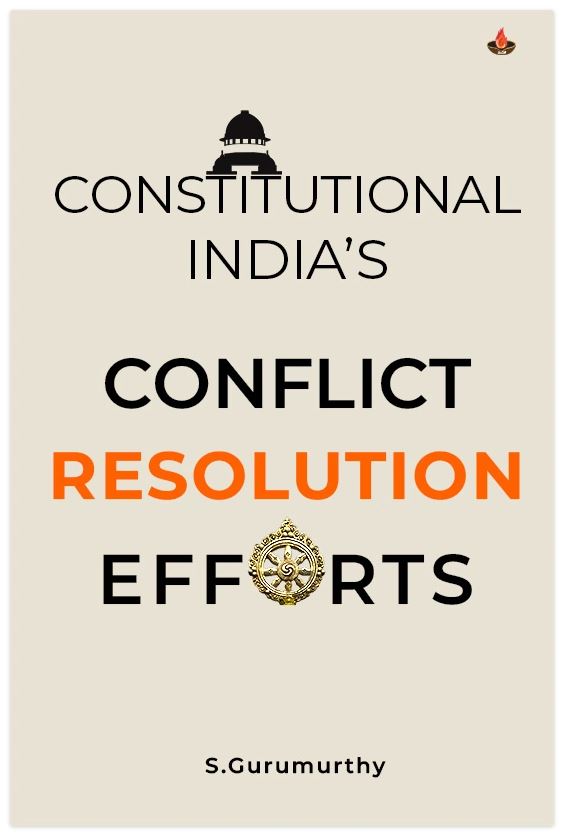Book review by– Pradakshina
This long essay was originally written as a preface for the book ‘Supreme Court on Hindutva’. In this book, thinker and author Sri S. Gurumuthy, presents an overview of various west-centric, Anglo-Saxon ideologies, concepts and thoughts which have predominantly shaped the post-1947- India’s efforts at Constitution-making and Nehruvian administration. The Nehruvian govt totally denied and negated civilizational India’s long tradition of functioning in all aspects of life, which was marked with accommodation, inclusion, assimilation, conciliation and synthesis. The non-aggressive, non-competing, non-conflicting and all encompassing Hindutva of Indian civilization was directly pitted with aggressive, predatory Abrahamic religions to the direct detriment of traditional India in the name of `modernity’ and `secularism’. Not only that, the foreign exclusivist religions were equated and were treated on par with Hindutva, in the name of `dharma nirapekshata’.
Sri Gurumurthy brilliantly analyzes the nature of this new animal `Geo-Christian secularism’ which was disdainfully thrust upon the non-suspecting quintessential traditional Hindu India, by a western educated elite post-1947. He discusses this nature of `socialist, secular’ India, in the background of momentous events before 1947 which paved way for the dominance of ‘Geo-Christian secular’ ideologies on India. He also discusses the way this `secular’, disconnected polity, stamped it’s authority on Constitution, legal and political frameworks, which are completely devoid of traditional Indian wisdom. He argues how western Euro-Christian model was posited as `modern’ and `progressive’, and traditional India thus became `communal’ and `regressive’. He debates how `socialism’ thrust upon India, takes the control away from self-sufficient and entrepreneurial capacities of Indians and makes them dependent on State. He reminds that even as recently as 1700s, India had 25% share in world GDP, even after 700-800 years of subjugation, just 1% less than the then China. He discusses the conciliatory approach of Supreme Court in a couple of landmark cases, in the wake of the Indian civilizational ethos mounting a stiff resistance to the `secular’ establishment, from mid-80s onwards. In this context, he talks about SC’s perspective on Hindutva.
In the ongoing debate on `Secularism’ and `Socialism’ in the country, this book throws light on these important aspects at this critical juncture of the nation’s life. Speaking on the civilizational continuity of India, in this contemplative, erudite, masterful and insightful book, Sri Gurumurthy’s arguments are compelling and eminently readable.
- The book is available on Hindu eShop and Amazon
Source: Arise Bharat






